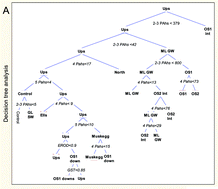An examination of the toxic properties of water extracts in the vicinity of an oil sand extraction site
Abstract
The industrial

* Corresponding authors
a
Fluvial Ecosystem Research, Aquatic Ecosystem Protection Division, Water Science and Technology, Environment Canada, 105 McGill Street, Montréal, Quebec, Canada
E-mail:
francois.gagne@ec.gc.ca
b Aquatic Ecosystem Protection Research Division, Water Science and Technology, Environment Canada, 867 Lakeshore Rd., Burlington, Ontario, Canada
The industrial

 Please wait while we load your content...
Something went wrong. Try again?
Please wait while we load your content...
Something went wrong. Try again?
F. Gagné, C. André, M. Douville, A. Talbot, J. Parrott, M. McMaster and M. Hewitt, J. Environ. Monit., 2011, 13, 3075 DOI: 10.1039/C1EM10591D
To request permission to reproduce material from this article, please go to the Copyright Clearance Center request page.
If you are an author contributing to an RSC publication, you do not need to request permission provided correct acknowledgement is given.
If you are the author of this article, you do not need to request permission to reproduce figures and diagrams provided correct acknowledgement is given. If you want to reproduce the whole article in a third-party publication (excluding your thesis/dissertation for which permission is not required) please go to the Copyright Clearance Center request page.
Read more about how to correctly acknowledge RSC content.
 Fetching data from CrossRef.
Fetching data from CrossRef.
This may take some time to load.
Loading related content
